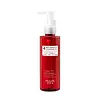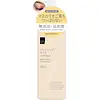What's inside
What's inside
 Key Ingredients
Key Ingredients

 Benefits
Benefits

 Concerns
Concerns

 Ingredients Side-by-side
Ingredients Side-by-side

Ethylhexyl Palmitate
EmollientIsopropyl Myristate
EmollientPEG-20 Glyceryl Triisostearate
EmollientCaprylic/Capric Triglyceride
MaskingIsononyl Isononanoate
EmollientIsoamyl Laurate
EmollientPhenoxyethanol
PreservativeTocopherol
AntioxidantPunica Granatum Seed Oil
EmollientSqualane
EmollientBisabolol
MaskingCitrus Aurantium Dulcis Peel Oil Expressed
PerfumingPelargonium Graveolens Flower Oil
MaskingTriethylene Glycol
MaskingPogostemon Cablin Leaf Oil
MaskingCitrus Limon Peel Oil
MaskingCamellia Japonica Seed Oil
EmollientMentha Piperita Oil
MaskingSolanum Lycopersicum Seed Oil
EmollientPiper Nigrum Fruit Oil
MaskingVaccinium Macrocarpon Seed Oil
Skin ConditioningHelianthus Annuus Seed Oil
EmollientLycopene
AntioxidantEthylhexyl Palmitate, Isopropyl Myristate, PEG-20 Glyceryl Triisostearate, Caprylic/Capric Triglyceride, Isononyl Isononanoate, Isoamyl Laurate, Phenoxyethanol, Tocopherol, Punica Granatum Seed Oil, Squalane, Bisabolol, Citrus Aurantium Dulcis Peel Oil Expressed, Pelargonium Graveolens Flower Oil, Triethylene Glycol, Pogostemon Cablin Leaf Oil, Citrus Limon Peel Oil, Camellia Japonica Seed Oil, Mentha Piperita Oil, Solanum Lycopersicum Seed Oil, Piper Nigrum Fruit Oil, Vaccinium Macrocarpon Seed Oil, Helianthus Annuus Seed Oil, Lycopene
Paraffinum Liquidum
EmollientPEG-8 Glyceryl Isostearate
EmollientGlycerin
HumectantWater
Skin ConditioningDimethicone
EmollientCeramide Ns
Skin ConditioningCitric Acid
BufferingSimmondsia Chinensis Seed Oil
EmollientSqualane
EmollientGlyceryl Caprate
EmollientPolyglyceryl-2 Laurate
EmulsifyingLavandula Angustifolia Oil
MaskingPelargonium Graveolens Oil
MaskingTetrasodium EDTA
Alcohol Denat.
AntimicrobialIngredients Explained
These ingredients are found in both products.
Ingredients higher up in an ingredient list are typically present in a larger amount.
Squalane is an emollient that helps the skin hold onto moisture. It's an oily liquid that occurs naturally in certain types of fish and plant oils.
Because squalane boosts hydration in the skin, it also comes with plenty of benefits: it is an antioxidant and can help fight free radicals and skin damage. Squalane is also found to have a detoxifying effect when applied.
Squalane comes from squalene, which occurs naturally within the sebum of our skin. It is one of the oils our skin produces to keep itself hydrated. Squalane is the hydrogenated version of squalene and has a longer shelf life.
Research shows that squalane is non-irritating (even at 100% concentration).
In general, it's a fantastic ingredient. It does a great job at hydrating the skin, and it's suitable for those with sensitive skin.
The source of squalane may impact malassezia / fungal acne. This is because olive oil derived squalane can contain impurities such as fatty acids and plant waxes. Sugarcane derived squalane is recommended for anyone with malassezia concerns.
Is squalane vegan?
This depends on the source. Squalane can be derived from both plants and animals. Most squalane used in skincare comes from plants.
Please note: the source of squalane is only known if disclosed by the brand. We recommend reaching out to the brand if you have any questions about their squalane.
Read more about squalene with an "e".
Is squalane an oil?
Squalane is often called an oil, but it’s technically not; it’s a hydrocarbon, meaning it’s only made of carbon and hydrogen, unlike true oils which are triglycerides made of fatty acids and glycerol.
The term “oil-free” isn’t regulated, so companies can define it however they want. Some exclude all oils, while others just avoid mineral oil or comedogenic oils.
While some people avoid oils thinking they cause breakouts, the right kind of oil (or oil-like ingredient like squalane) can actually help balance and hydrate your skin. It’s worth testing out simple oils or squalane to see what works best for your skin.
Learn more about Squalane